Industry Workshops
WI-1: New Air Interfaces for 5G
*Highlights*:
--High level speakers from both industry and academia
--Live demo session sliding into “Globecom’s Demo Night”
Organizers:
- The 5GNOW Consortium
- Bell-Labs Alcatel-Lucent, Germany (Thorsten Wild)
- Fraunhofer Heinrich Hertz Institute, Germany (Gerhard Wunder)
- Technische Universität Dresden, Germany (Prof. Gerhard Fettweis)
- CEA-LETI, France, (Dimitri Ktenas)
- IS-Wireless, Poland (Slawomir Pietrzyk)
- National Instruments, Hungary (Bertalan Eged)
Reference link: http://5gworkshop.hhi.fraunhofer.de
Abstract:
Visionary application scenarios, such as the Internet of Things, Gigabit Wireless Connectivity, Tactile Internet, and many more, expected to play a dominant role for 5G cellular communication systems reveal major shortcomings of the design paradigms of LTE/LTE-A, i.e. synchronism and orthogonality: 1) Collaborative schemes have been introduced to boost capacity and coverage, and wireless networks are becoming more and more heterogeneous following the non-uniform distribution of users. However, tremendous efforts must be spent to collect the gains and to manage such systems under the premise of strict synchronism and orthogonality as in LTE/LTE-A; 2) The advent of the Digital Agenda and the introduction of carrier aggregation are forcing the transmission systems to deal with fragmented spectrum. Current systems impose generous guard bands to satisfy spectral mask requirements which either severely deteriorate spectral efficiency or even prevent band usage at all, which is again an artefact of strict orthogonality and synchronism constraints within the PHY layer; 3) Finally, the fraction of machine-type-communications (MTC) is growing fast. In fact, the massive wireless connectivity of machines with other machines, referred to as M2M or the IoT, is the next foreseen killer application. Such sporadic traffic generating devices should not be forced into the bulky synchronization procedure of LTE-A PHY layer random access.
In this workshop we present the state-of-the-art in the development of New Air Interfaces for 5G which efficiently support such application visions. The workshop program will discuss several new waveforms for 5G (including a scientific-oriented waveform tutorial) from an industry-driven perspective and thereby discuss design principles, implementation details, performance results, and first demonstrations of selected results. Moreover all key players in this field will present their distinctive technical viewpoint on new air interfaces and possible candidate selection. In the course of this workshop the participants will have the chance to discuss and connect with influential industry people working in this field. Altogether, it is an excellent opportunity to collect the latest views and developments regarding an exciting open field on the road towards 5G.
Speakers:
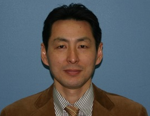 Takehiro Nakamura, NTT DOCOMO, Inc.
Takehiro Nakamura, NTT DOCOMO, Inc.
Takehiro Nakamura joined NTT Laboratories in 1990. He is now VP and Director of the Radio Access Network Development Department of NTT DOCOMO, Inc. Mr. Nakamura has been working for research and development of the W-CDMA, HSPA, LTE/LTE-Advanced and 5G technologies.
He has been engaged in the standardization activities for the W-CDMA, HSPA, LTE/LTE-Advanced and 5G at ARIB in Japan since 1997. He is currently the leader of 2020 and Beyond Ad Hoc(20B AH) in ARIB since October 2013.
He has been contributing to standardization activities in 3GPP since1999. He had contributed to 3GPP TSG-RAN as a vice chairman during March 2005 to March 2009 and as a chairman during April 2009 to March 2013.
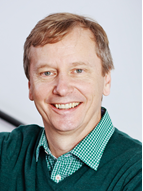 Gerhard P. Fettweis, TU - Dresden
Gerhard P. Fettweis, TU - Dresden
Gerhard P. Fettweis earned his Ph.D. under H. Meyr’s supervision from RWTH Aachen in 1990. Thereafter he was at IBM Research and then at TCSI Inc., California. Since 1994 he is Vodafone Chair Professor at TU Dresden, Germany, with main research interest on wireless transmission and chip design. He is an IEEE Fellow and an honorary doctorate of TU Tampere. As repeat entrepreneur he has co-founded 11 startups so far.
He has setup funded projects in size of close to EUR 1/2 billion, notably he runs the German science foundation’s CRC HAEC and COE cfAED. He is actively involved in organizing IEEE conferences, e.g. TPC Chair of ICC 2009 and TTM 2012, General Chair of VTC Spring 2013 and DATE 2014.
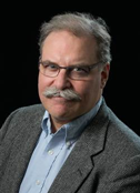 Tod Sizer, Bell-Labs Alcatel-Lucent
Tod Sizer, Bell-Labs Alcatel-Lucent
Dr. Theodore (Tod) Sizer is Vice President of the Wireless Research Program in Bell Laboratories. In this role he leads teams in seven worldwide locations innovating in all aspects of wireless systems, technology and software. In addition his teams collaborate with fixed access systems including copper, and optical with special opportunities being explored at the convergence between these and wireless.
Recently he has had significant impact as a key proponent and inventor of the lightRadio™ technology and systems leading to Alcatel-Lucent’s product line solution to address the current Wireless Data explosion.
During his tenure at Bell Labs he has performed research in Wired and Wireless Home Networking, Fixed Wireless Loop systems, Video Watermarking technologies, Optical Computing and Switching Systems, and High Power Laser Design. He was a member of the technical team in Lucent’s role as a promoter in the Bluetooth Special Interest Group (SIG). His responsibilities in the SIG included being Chair of the Coexistence Working Group.
Tod graduated from Amherst College, Magna Cum Laude and received his Masters and Doctorate from the Institute of Optics at the University of Rochester. In 2007 Tod was named a Bell Labs Fellow “For sustained creative contributions to wireless systems, particularly in the convergence of packet and wireless technologies”. He is the author of 43 patents, 16 patents pending and over 50 refereed publications and is a member of the IEEE and OSA.
Organizer contact:
 Thorsten Wild, Bell-Labs Alcatel-Lucent
Thorsten Wild, Bell-Labs Alcatel-Lucent
Thorsten Wild received his Dipl.-Ing. degree in Electrical Engineering from the University of Karlsruhe in 2001, after that joining Alcatel-Lucent as a research engineer. He authored many 3GPP LTE standardization technical documents and is holding more than 40 filed patents in communications, being nominated for the Bell Labs Inventors Award in 2011. He has been engaged in several European and national research projects, like WINNER and Easy-C. Currently, he is the technical manager of the 5GNOW research project.
Thorsten Wild’s background is on signal processing, multi-antenna communication and physical layer design. He has been working on UMTS, LTE, LTE-A, multiuser MIMO, coordinated multi-point, channel estimation and limited feedback. He is co-author of the Cambridge University Press book "Coordinated Multi-Point in Mobile Communications ". His recent work in the context of 5G air interface design focuses on new waveforms and multiple access schemes.
Organizer contact:
Agenda:
| Time |
Session Title |
Speakers / Talks |
| 07:30 - 09:00 |
New Waveforms for 5G -- Tutorial |
Gerhard Wunder |
| 09:15 - 10:00 |
Plenary Talk |
Tod Sizer (ALU), Title: tba |
| 10:00 – 10:30 |
Coffee Break |
|
| 10:30 – 11:15 |
Plenary Talk |
Takehiro Nakamura (Docomo), Title: tba |
| 11:15 - 13:00 |
5GNOW Session I |
Gerhard Wunder (HHI), Title: tba
Thorsten Wild (ALU), Title: tba
Dimitri Ktenas (CEA-LETI), Title: tba
Slawomir Pietrzyk (ISW), Title: tba
Gerhard Fettweis (TUD), Title: tba
Bertalan Eged (NI), Title: tba |
| 13:00 – 14:00 |
Lunch Break |
|
| 14:00 – 14:30 |
Plenary Talk |
Gerhard Fettweis, Title: tba |
| 14:30 – 16:30 |
Invited Industry Session |
Maziar Nekovee (Samsung)
Kari Pajukoski (NSN)
Egon Schulz (Huawei)
Michael Färber (Intel)
Berna Sayrac (Orange)
Tbc (Ericsson) |
| 15:45 – 16:15 |
Coffee Break |
|
| 17:00 – 17:45 |
Panel Discussion |
Participants: Tod Sizer, G. Fettweis,
tba, … (panelists from Orange, NSN, Samsung, Huawei tbc) |
| 17:45 – 18:30 |
Hardware Session |
Dimitri Ktenas (CEA)
Johannes Koppenborg (ALU)
Gerhard Fettweis (TUD) |
| 18:30 – open end |
Demos |
LIVE DEMOS
CEA-LETI
ALU
TUD |
WI-2: International Workshop on the Internet of Things and Services – Visions, Technologies & Research Challenges
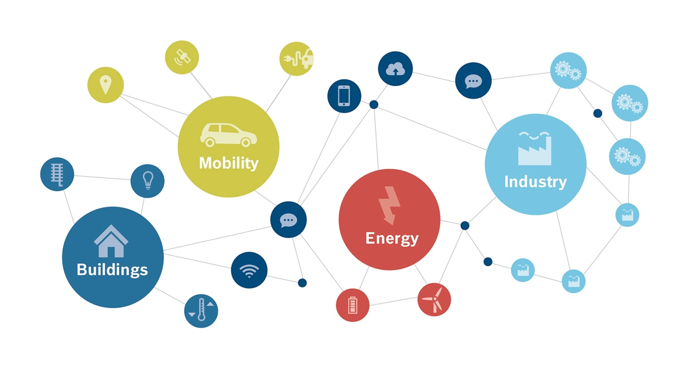 Workshop Type:
Workshop Type: Full-Day Industry Workshop
Program Track: Emerging Applications
Workshop Organizers:
Dr. Andreas Mueller Dr. habil. Gerhard Wunder
Robert Bosch GmbH Fraunhofer Heinrich-Hertz-Institute
Stuttgart, Germany Berlin, Germany
E-Mail:
andreas.mueller21@de.bosch.com E-Mail:
gerhard.wunder@hhi.fraunhofer.de
Organizers:
Dr. Andreas Mueller (Bosch)
Priv.-Doz. Dr. habil. Gerhard Wunder (Fraunhofer Heinrich-Hertz-Institute)
Workshop Website Link:
www.iots-workshop.com
Abstract:
The Internet of Things and Services (IoTS) will be one of the next big things. By enabling all kinds of smart objects, such as intelligent sensors and actuators, to communicate and interact with each other across different networks and domains, a plethora of new services & applications may be created, thus bearing the potential to create substantial new markets and to revolutionize existing ones. Future Smart Factories, for example, will exhibit an unprecedented degree of flexibility and versatility, Smart Homes will improve the comfort, convenience and energy-efficiency at your home and Intelligent Transportation Systems will increase traffic safety and eventually enable autonomous driving. Current forecasts predict that there will be more than 50 billion devices connected to the Internet by 2020 and this is just the beginning.
However, it is also quite clear that on the way to a fully connected cyber-physical world still numerous research challenges have to be addressed. This includes aspects like the development of new energy- and resource-efficient connectivity solutions, comprehensive support of self-management and plug-and-play mechanisms, novel (usable) security approaches, seamless interoperability across heterogeneous networks and different domains, novel semantic technologies and middlewares, and many more. Also, in order to exploit the full potential of the IoTS, a close collaboration is required between academia, the traditional telecom industry, but also industries representing the different application domains, which probably will be among the main beneficiaries of the IoTS in future.
The goal of this workshop is to bring all these players together and to foster a better common understanding, to exchange visions and latest research results, to discuss promising new technologies and to highlight open research challenges. To this end, several renowned experts from industry have been invited, who will cover the topic in keynote speeches and invited talks from different perspectives in order to provide a rather comprehensive overview of all issues that have to be considered in this respect. Besides, the workshop will include a panel discussion on open research challenges and the way forward to finally make the IoTS become reality. Furthermore, it will feature a demo session, during which latest (practical) research results will be showcased and demonstrated.
You should not miss this exciting event if you want to:
- Learn more about the unprecedented opportunities and applications enabled by the IoTS
- Get in touch with leading experts and industry representatives and expand your professional network
- Understand the major research challenges and ongoing developments in this quickly growing area
- Get a better overview of relevant standardization bodies and initiatives
- See how your own research activities may contribute to the future success of the IoTSWe are already looking forward to meeting you in Austin/Texas in December!
Agenda (tentative):
| Time |
Session Title |
Speakers / Talks |
| 8:30 – 8:40 |
Welcome Message |
Andreas Mueller (Bosch)
Gerhard Wunder (Fraunhofer HHI) |
| 8:40 – 10:00 |
Opening Keynotes:
The Industry’s Perspective
on the IoTS |
N.N. (Bosch, tbc.)
Joseph J. Salvo (GE Global Research) |
| 10:00 – 10:30 |
Coffee Break |
|
| 10:30 – 12:15 |
Session I: Invited
Talks from Industry |
Mischa Dohler (Worldsensing & King’s College London)
Jan Hoeller (Ericsson)
Fan Bai (General Motors Global R&D)
Geng Wu (Intel) |
| 12:15 – 14:00 |
Lunch Break |
|
| 14:00 – 14:30 |
Keynote II |
Greg Burns
(Qualcomm Connected Experiences & AllSeen Alliance) |
| 14:30 – 15:45 |
Session II: Invited
Talks from Industry |
Florian Michahelles (Siemens)
Oleg Logvinov (STMicroelectronics & IEEE P2413 WG)
Tao Zhang (Cisco) |
| 15:45 – 16:15 |
Coffee Break |
|
| 16:15 – 16:45 |
Keynote III |
tba |
| 16:45 – 17:45 |
Panel Session |
“The IoTS – From Theory to Practice”
Panel Chair: Hans D. Schotten
(German Research Center for Artificial Intelligence
& Technical University of Kaiserslautern) |
| 17:45 – 18:00 |
Demo Teaser Session |
Short teaser talks for the demo session |
| 18:00 – 22:00 |
Demo Session |
Impressive IoTS live demos |
Biographies of the Workshop Organizers:
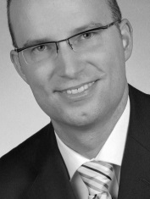 Andreas Mueller, Bosch GmbH
Andreas Mueller, Bosch GmbH
Andreas Mueller is a Research Engineer and Project Manager within the Corporate Research department of Robert Bosch GmbH in Stuttgart, Germany. In line with Bosch’s ambition to actively drive and shape the emerging Internet of Things and Services, Andreas is responsible for various research activities in this exciting area, with applications in different verticals, including the industrial, consumer, building and healthcare domains. To this end, he is closely collaborating with experts from various fields and disciplines in order to make the Internet of Things and Services become reality.
Prior to joining Bosch, Andreas was a Research Staff Member at the Institute of Telecommunications of the University of Stuttgart, Germany, where he was contributing to the further development of the 3GPP Long Term Evolution towards LTE-Advanced. Besides, he was working as a Systems Engineer for Rohde & Schwarz, developing a novel software-defined radio based communication system for the German Armed Forces. Andreas holds a German Diploma degree as well as a Ph.D. degree in Electrical Engineering (with distinction) and a M.Sc. degree in Information Technology, all from the University of Stuttgart, Germany.
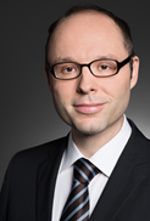
Gerhard Wunder studied electrical engineering at the University of Hannover and the Technical University (TU) Berlin and received his graduate degree in electrical engineering (Dipl.-Ing.) with highest honors in 1999 and the PhD degree (Dr.-Ing.) in communication engineering on the PAPR problem in OFDM with distinction (Summa Cum Laude) in 2003 from TU Berlin. In 2007, he also received the habilitation degree and became a Privatdozent at the TU Berlin. Since 2003 he is heading a research group at the Fraunhofer Heinrich-Hertz-Institut in Berlin. Currently, Dr. Wunder is initiator, coordinator and principal investigator both in the FP7 Call 8 project 5GNOW (www.5gnow.eu) supported by the European Commission as well as PROPHYLAXE (www.ict-prophylaxe.de) the largest IoT physical layer security project supported by the German Ministry of Education and Research. He also receives currently funding in the DFG priority program 1397 COIN (Communications in Interference Limited Networks).
In 2000 and 2005, he was a visiting professor at the Georgia Institute of Technology (Prof. Jayant), and the Stanford University (Prof. Paulraj). In 2009 he was a consultant at Alcatel-Lucent Bell Labs, New Jersey (USA). Since 2011, he is an editor for the IEEE Transactions on Wireless Communications. In 2011 he received the award for outstanding scientific publication by the German communication engineering society (ITG). He is the author of the two recent articles in the IEEE Signal Processing Magazine (Nov. 2013), on the PAPR problem, and the IEEE Communication Magazine, 5G special issue (Feb. 2014).
WI-3: In-Building Wireless Access: Infrastructure Solutions for Emerging Applications
Organizers: Dr. Michael Sauerand and Igor Berlin, Corning Incorporated
Abstract:
The Workshop will discuss challenges, industry dynamic, and solutions for in-building wireless access infrastructure due to the combination of multiple technologies on common systems. The trend of combining distributed antenna system approaches, remote radio signal feeding, Small Cells, etc. for increased capacity, performance and dynamic traffic management leads to new ways for approaching infrastructure design. Migration to standards like LTE and LTE-Advanced requires the support of new features and capabilities. SON & HetNet is leading to new ways of in-building wireless access system design. Further, the increasing role and importance of new generations of WiFi technologies such as 802.11ac and 802.11ad/WiGig lead to a new set of considerations for how in-building wireless access is addressed. Emerging applications for healthcare, public safety, telemetry and technologies for services like in-building location positioning are supported by these multi-technology networks and will be discussed in the workshop. Experts from the industry will discuss solutions to these new challenges and the workshop will facilitate an exchange between industry and academia on technologies for in-building wireless access.
Agenda:
 Panel Discussion:
Panel Discussion: What is optimized infrastructure for converged in-building wireless access networks?
Biography:
Dr. Michael Sauer joined Corning in 2001 as Sr. Research Scientist in the Network Equipment Research Directorate of Science & Technology. His research interests included optical network architectures, high data rate transport systems, optical packet switching, electro-optical signal generation techniques, fiber-radio system design, and millimeter-wave fiber-optic transmission. In 2011, he joined the Corning Wireless division as R&D Director and since 2014 he is Technology Director of Corning Optical Communications. Dr. Sauer received his master’s and doctoral degrees in Electrical Engineering from Dresden University of Technology, Germany. He has more than 100 refereed publications and holds 15 patents.
Igor Berlin is the Chief Architect in Commercial Technologies group with Corning, an industry-leading wireless networking and distributed antenna system business within Corning Optical Communications. Igor has over 20 years of experience in the wireless industry where he has led multiple development
programs and product conceptualization initiatives with a focus on enterprises, operators, and government agencies. He pioneered and led the development of an innovative in building fiber based DAS platform targeting multiband-multiservice environments supporting a broad range of technologies and applications. His professional experiences have leveraged a deep understanding of the wireless market for strategic technology planning, new product development, and product management. He holds a Bachelor and Master of Science degree in Electrical Engineering from the University of Riga,
Latvia.
WI-4: Advanced RF Communications Technology for Public Safety/Homeland Security
Organizer: Fred Frantz
Abstract:
The landscape for public safety communications is changing rapidly. Traditional land mobile radio used by public safety agencies is rapidly being supplemented by wireless broadband communication. The National Public Safety Broadband Network (also known as FirstNet) will provide public safety users with LTE capability for data access. Advanced technologies such as cognitive radio, channel bonding across disparate networks, and steerable multiband antennas have the potential to provide public safety with significant communications capabilities that can meet their unique requirements for ubiquitous, robust, high capacity communications capabilities. In addition, capabilities such as mission critical voice over an LTE network, management of spectrum resources to meet mission requirements, and balancing local control of network operations without compromising interoperability among local agencies are all key to successful deployment and utilization of FirstNet.
The objective of this panel/workshop is to identify from a public safety user’s perspective the technology needs for communications, to discuss the federal government role in sponsoring research, development, test and evaluation of evolving technology to meet those needs, and to identify promising technologies that could have near- and long-term impact on both future land mobile radio systems as well as wireless broadband networks of the future.
Presenters:
Fred Frantz, fred.frantz@engilitycorp.com
Joseph Heaps, joseph.heaps@usdoj.gov
Dr. Bedri Cetiner, Utah State University, bedri.cetiner@usu.edu
Dr. R. Chandramouli (Mouli), Stevens Institute of Technology, mouli@stevens.edu
Dr. Anthony Salvemini, Performance Criteria, Inc., asalvemini@optonline.net
Biography:
Fred Frantz has been working in the field of public safety communications for over 14 years. As a Program Manager for Engility Corporation in Rome, New York, Mr. Frantz is responsible for Engility’s support to several government research and development organizations. In support of the National Institute of Justice, Mr. Frantz has led a team responsible for operational evaluations and pilot programs of fixed site multi-band gateways, Voice over IP interoperability solutions, and multiband subscriber radios for public safety. Mr. Frantz has also been active in the Wireless Innovation Forum since 2002 and was the chair of the Public Safety Special Interest Group from 2004-2013. He received a Bachelors of Science degree in Mathematics from Bucknell University and a Masters of Science in Computer and Information Sciences from Syracuse University, and is a member of IEEE’s Communications Society.
Back home >>








